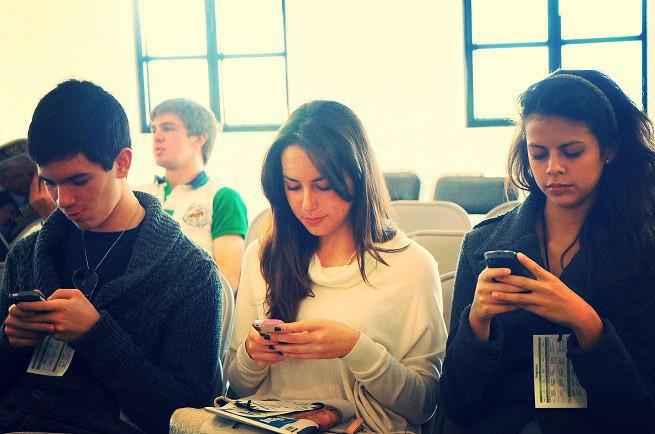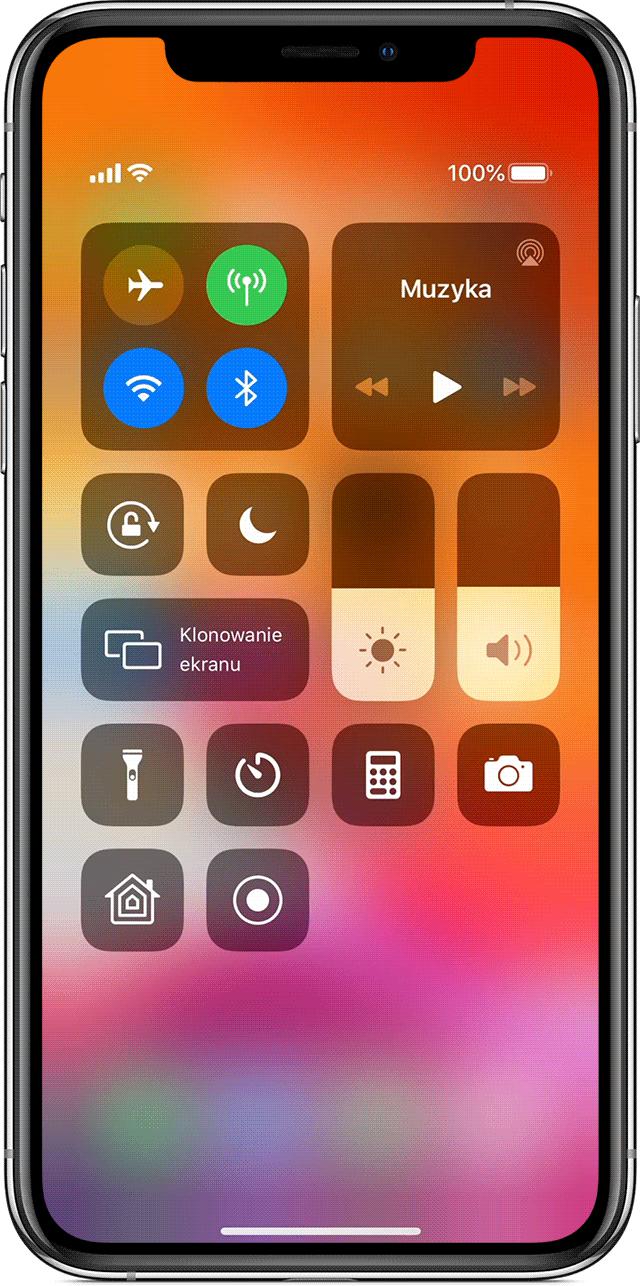Teens remain online for a large part of the day, and remote education has additionally significantly extended the time spent in front of the monitor.In total, the Polish teenager in 2020 stared at the screen of the computer or smartphone OK.12 hours a day - the authors of the teen report 3 point out.0.
Facebook ustalił wewnętrznie, że Instagram jest szkodliwy dla młodych ludziHow much time do young people spend online
According to the declarations of young people surveyed, in their free time, they used the network on average 4 hours and 50 minutes a day.On public holidays, weekends or holidays, this indicator increased and amounted to an average of 6 hours and 10 minutes.Close to every tenth(11.5 percent.)The teenager was active on the web over 8 hours a day, and every fifth(21.3 percent.)spent so much time before the monitor on days off from science.
On average, young people allocated 7 hours and 41 minutes a day for remote classes in front of the monitor.The age of respondents, of course, differentiates this time: secondary school students were online more often - both in their free time and in remote class.
Online lessons from 7:00 to 13:00 was the time of the most intensive use of the Internet.The distribution of network use on non -school days also shows that young Internet users have allocated time that could be differently developed, most often for online activity.Almost every sixth(16.9 percent.)used the Internet after 22:00, at the expense of his sleep.
Władze Chin chcą ograniczyć czas spędzany przez nieletnich w internecieParents do not have an alternative to children
Parents' reaction to this situation is worrying.The responses of the guardians show that the Internet was often the only idea to organize the free time of a young man(who could use to build direct relationships parent -child).They also do not reach the time their children spent on the internet and did not control the use of the network at night.
Young people most often connected to the Internet using mobile devices(92.1 percent.).During the pandemic restrictions of the stationary learning mode, students took part in remote lessons, using mainly laptops(66.6 percent.)and smartphones(58.0 percent.)- some users used at the same time several devices of various types.
Chiński TikTok rażąco ograniczony dla nastolatkówSeveral hours a day for learning online
School duties meant that teenagers most often used the Internet when doing homework(76.8 percent.)or communication with teachers(74.1 percent.).Almost half pointed to activities involving contacts with friends or family using messengers and chats(48.2 percent.), preparation for tests and classrooms(47.7 percent.)oraz korzystaniu z poczty e-mail(45,9 proc.).Less often than every third student supported his education using the network to expand knowledge(30.7 percent.)oraz do tworzenia prezentacji(30,4 proc.).
Definitely fewer teenagers during school duties used the Internet to browse messages and reading articles(16.9 percent.).The least popular was to create graphics, movies, photo processing(8.9 percent.)oraz korzystanie z kursów e-learningowych(4,5 proc.).
Teens commonly used communicators and social networking sites(only 0.7 percent.she indicated that she did not use the internet in this way).Young people most often used YouTube(87.8 percent.)oraz Facebooka i Messengera(86,8 proc.).
Sylwester Wardęga: koniec wciskania widzom kitu przez influencerów, będziemy ich sabotować
Younger children use the internet
With the development of digital technologies, their availability increases - even very young people use the Internet.The NASK data shows that from 2014.There was a clear decrease in the average age declared by the respondents as the one in which they began using the network independently.
Some young respondents before 6.she had a telephone allowed to connect to the Internet, which was confirmed by both children(3.4 percent.), as well as parents(5.2 percent.).Almost every tenth student claimed that he had a computer with internet access before 6.year of life, which was also confirmed by parents(teenagers - 9.5 percent.vs.Parents - 9.2 percent.).
The students' answers show that every third of them used the Internet independently from 4-6 years(32.4 percent.).Every fifth teenager said that he began using digital technologies about 9-10 years ago(21.1 percent.), almost as many students declared that their experience of using the network is 7-8 years(19.8 percent.).
Attention is drawn to the fact that over 15 percent.She pointed to more than 11 years of experience in this area("11 and more years of experience"-15.6 percent.).However, that's not all - almost 5 percent.respondents indicated that this is more than 13 years of experience.This means that some teenagers(4.6 percent.)rozpoczęła samodzielne użytkowanie internetu mając zaledwie 4 lata(wiek najstarszych nastolatków uczestniczących w badaniu wynosił 17 lat).
As Wojciech Pawlak, the director of NASK, admits, 2020 was unique in terms of changes in the digital revolution.- Practically from day to day, online activities have become the only effective and safe form of fulfillment of obligations, satisfying needs or establishing and maintaining relationships.Conclusions from the study conducted at that special time "Teens 3.0 "can become a valuable clue for parents and teachers and educational institutions in Poland for a better understanding of aspects related to the presence of the youngest on the Internet - he comments.
Headache and sleep disorders are more and more frequent symptoms of internet abuse by teenagers
Fatigue, pattern deterioration, sleep disorders, headache and eye pain - children and adolescents more often than two years ago feel somatic symptoms associated with internet abuse - said Dr. Rafał Lange, under which the latest NASK teen study was created under the editorial office 3.0.
"We have noted some interesting changes compared to 2018.The first is the time to use the internet by teens in their free time, which is still extended from the first edition of our study.Currently, on average 4 hours 50 minutes, or ok.40 minutes more than in 2018.We expected remote education, which caused students to spend more time in front of the monitor, they would discourage them.We have surprised that despite remote learning, they - for personal purposes - spent 4-5 extra hours on the Internet, "said Lange.
"This confirms the hypothesis that we set two years ago that the time spent by the monitor is a permanent element of the teenager's life.(...)Internet to dla dzisiejszych nastolatków po prostu społeczna przestrzeń - oni tego potrzebują i starają się jak najwięcej tam przebywać, tym bardziej, że jest to przestrzeń łatwo dostępna i bardzo dla nich atrakcyjna" - dodał Lange.He informed that the so -called.internet initiation - that is, the moment when the child begins to use the Internet by himself.Currently, for primary schools, average time is 6 years, two years ago it was 6 years and 8 months.
"We also observed positive phenomena, although it is not entirely clear whether Lockdown had more influence on them or the digital education of parents and teenagers.First of all: the declared viewership of patostreams compared to 2018 has fallen by half.(...)Druga bardzo ciekawa sprawa - znacząco, także prawie o połowę, spadła częstotliwość spotykania się nastolatków z dorosłymi poznanymi w internecie.This is a positive phenomenon, "he noted.
To some extent - thanks to remote education - the utility range of the Internet has also expanded."Until now, the kids associated the Internet mainly with entertainment and social life.Now - on the occasion of remote learning - they have discovered its functionality and the fact that you can effectively learn via the Internet.It's a big plus of these changes, "Lange said.
However, using the Internet on mobile devices is not only dictated only by utilitarian reasons.Smartphones allow free access to the network not only at home or school, but virtually anywhere.Most users of new technologies use the Internet in a moderate way, but a large part stare at the screens of devices very intensively. Zjawisko spędzania zbyt dużej ilości czasu w wirtualnym świecie oraz silne zaangażowanie w aktywności online jest na tyle powszechne, że w literaturze można spotkać takie pojęcia, jak: „uzależnienie od internetu”, „siecioholizm”, „nadużywanie internetu”, „FOMO”(ang. Fear of Missing Out)czy „problematyczne użytkowanie internetu”(PUI).
"Academics are constantly discussing whether internet addiction, on a smartphone, can be called addiction.That is why concepts are a bit softening this phenomenon like e.g.. właśnie: problematyczne użytkowanie internetu(PUI).We did the first test on this issue two years ago, in 2018, and now, in 2020.We repeated him.As for the high degree of PUI, not much has changed: two years ago it was 2.2 percent.teenagers, this year - 3.2 percent.It's ok.50 percent.more, but on a global scale for the entire population it is 1 percentage point.This is not much, "said Lange.
Unfortunately, the somatic effects of internet abuse are relatively often observed in the studied population. Zjawisko to jest najbardziej(statystycznie)związane nie tyle ze sposobem użytkowania, co z ilością czasu spędzonego przed ekranem, dlatego - jak napisano w badaniu NASK - należałoby zachęcić rodziców i opiekunów do przemyślenia ich dotychczasowej strategii wychowawczej i kontroli rodzicielskiej w zakresie dostępu dziecka do internetu."Somatic symptoms of too intensive use of the Internet are intensifying - children more often feel physical ailments: headache, eyes, fatigue, pattern deterioration, sleep disorders," said Lange.A disturbing change, as he noted, is also the fact that the so -called.teen tolerance for stimulus."This means that after pandemic time children need more time on the Internet to feel satisfaction," explained Lange.
The authors of the study have determined that the category of teenagers, which is most strongly burdened with the problematic use of the Internet, are girls attending secondary school.
"I hypothesize that a large role in social media, whose algorithms are built in such a way as to stop the teenagers as long as possible in front of the monitor.They attract girls more often than boys, because this is the nature of this type of communication;Girls use the internet more often to contact their peers, to social life, and boys treat it more often as a device for entertainment: watching movies and playing games, "said Lange.
The study was carried out in December 2020. metodą CAWI(wspomagany komputerowo wywiad przy pomocy strony WWW)na populacjach nastolatków oraz ich rodziców i opiekunów prawnych. Respondentów wybrano za pomocą doboru zespołowego dwustopniowego(szkoła/klasa), na podstawie danych statystycznych Głównego Urzędu Statystycznego(GUS)oraz Ministerstwa Edukacji i Nauki(MEiN). Kompletne odpowiedzi uzyskano od 1733 uczniów(7.primary school class and 2. klasa szkoły ponadpodstawowej)oraz 893 rodziców i opiekunów prawnych z 61 szkół we wszystkich 16 województwach w Polsce.


![Apps and games on iOS for free.Promotions, discounts, discounts [27.12.2021] Apps and games on iOS for free.Promotions, discounts, discounts [27.12.2021]](https://website-google-hk.oss-cn-hongkong.aliyuncs.com/article-website/google/2021/12/31/661e1a9d1bdfffaecac65b0350aa0db5.webp?x-oss-process=image/auto-orient,1/quality,q_70/format,jpeg)